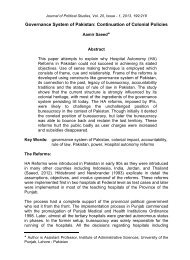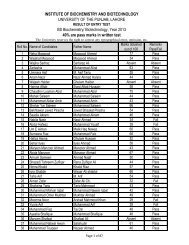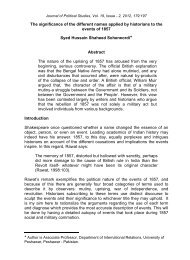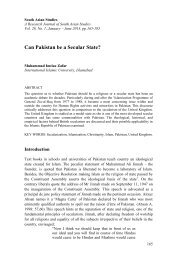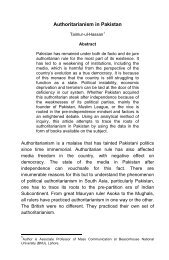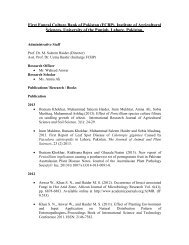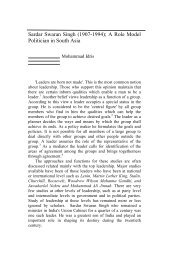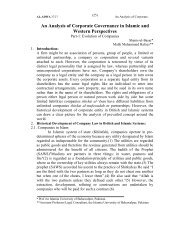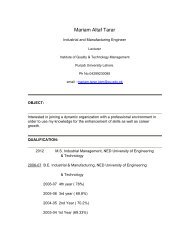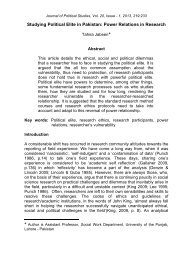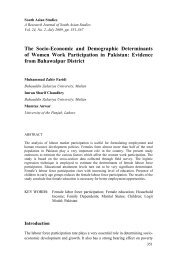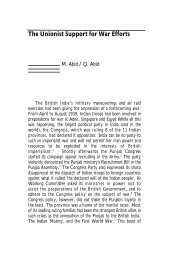Reconceptualising Domestic Violence as 'Domestic Torture'
Reconceptualising Domestic Violence as 'Domestic Torture'
Reconceptualising Domestic Violence as 'Domestic Torture'
You also want an ePaper? Increase the reach of your titles
YUMPU automatically turns print PDFs into web optimized ePapers that Google loves.
Shazia Qureshi<br />
the provisions of CAT to intense criticism by many feminists. Article 1 of CAT<br />
defines torture in the following words:<br />
For the purposes of this Convention, torture means any act by<br />
which severe pain or suffering, whether physical or mental, is<br />
intentionally inflicted on a person for such purposes <strong>as</strong><br />
obtaining from him or a third person information or a<br />
confession, punishing him for an act he or a third person h<strong>as</strong><br />
committed or is suspected of having committed, or intimidating<br />
or coercing him or a third person, or for any re<strong>as</strong>on b<strong>as</strong>ed on<br />
discrimination of any kind, when such pain or suffering is<br />
inflicted by or at the instigation of or with the consent or<br />
acquiescence of a public official or other person acting in an<br />
official capacity. It does not include pain or suffering arising<br />
only from, inherent in or incidental to lawful sanctions.<br />
(emph<strong>as</strong>is added)<br />
As the text of article 7 of the ICCPR does not use the phr<strong>as</strong>es such <strong>as</strong> ‘public<br />
officials’ or ‘person acting in official capacity’, its scope is viewed wider, by<br />
some feminists, compared to the CAT. Since the overall subject matter of<br />
ICCPR pertains to those rights that fall into the category of public sphere,<br />
arguably, the existence of state involvement element is perceived to be<br />
understood. The CAT’s excessive emph<strong>as</strong>is on public realm is most criticized<br />
by some feminist scholars (Charlesworth & Chinkin 1993: 72). Only the<br />
abuses perpetrated by agents of the state are recognized <strong>as</strong> torture<br />
(Byrnes,1988-89: 218). Additionally, law’s standard practice of using<br />
m<strong>as</strong>culine vocabulary, to which the CAT is not an exception, tends to suggest<br />
that prohibition on torture represent a male right rather than a human right<br />
(Edward, 2006: 354-355). The dynamics of the gendered nature of<br />
international law/HRL h<strong>as</strong> been succinctly described by MacKinnon in the<br />
following words ‘When men sit in rooms, being states, they are largely being<br />
men’ (Mackinnon,1994: 15). For this re<strong>as</strong>on, she argues, they do not, and<br />
cannot, represent women’s interests. From a traditional view point state<br />
complicity is generally a sine qua non of the notion of torture. The male<br />
privileging approach and gender exclusionary trend underpinning the CAT h<strong>as</strong><br />
failed to integrate the experiences of women’s lives (Charlesworth & Chinkin<br />
1993: 70). Arguably women are more likely to suffer violence at the hands of<br />
private individuals and/or within the familial context than by public officials,<br />
outside of domestic sphere (Edward, 2006: 353, Youngs, 2003: 1213,<br />
McQuigg, 2011: 7 & Benninger-Budel, 2008: 4). However, the CAT, for the<br />
re<strong>as</strong>ons cited above, is more applicable to and corresponds with the realities<br />
of men’s lives. Noting that activities predominantly relating to men’s life fall<br />
within the protective range of the CAT, Mackinnon remarks ‘when a woman is<br />
tortured by her husband in her home, humanity is not violated’<br />
(Mackinnon,1994: 6).<br />
38




